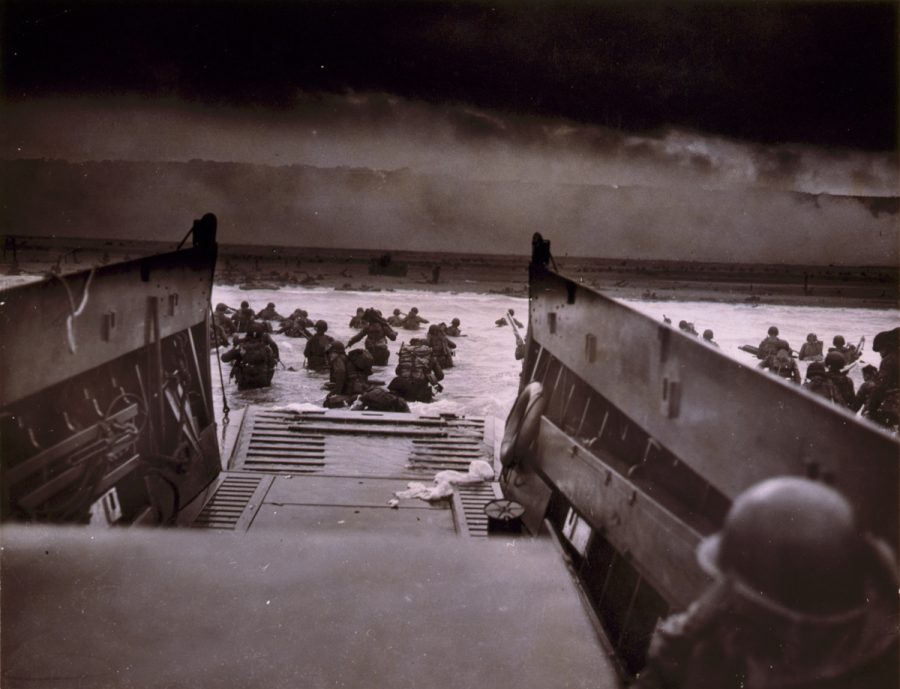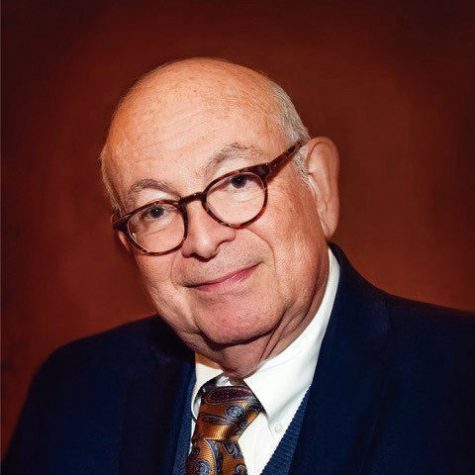D-Day plus 81 years: Pivotal battle helped save the West, world Jewry
Published June 2, 2019
June 6, 2023, will mark the 79th anniversary of D-Day, the Normandy invasion that dealt a fatal blow to the evil, genocidal dictatorship of Adolf Hitler, saved Western civilization and arguably the Jews of the entire world.
On June 5, 1944, after a break in the weather, General Dwight David Eisenhower, the Supreme Allied Commander, made the momentous decision to launch the largest amphibious landing in the history of Western civilization with just three words to his military colleagues: “OK, we’ll go.”
With those words, Eisenhower set in motion Operation Overlord, the invasion of 150,000 troops—from the United States, Britain and Canada—who stormed ashore along a 50-mile stretch of the Normandy coast, broken into five code-named amphibious landing areas (Omaha, Utah, Gold, Juno and Sword). On Omaha Beach, American troops faced the stiffest resistance and were met with a hail of bullets from the well-entrenched Nazi troops, who controlled the sheer heights of the area and could fire down at will.
An armada of 6,000 ships and landing craft carried those young soldiers, sailors and Marines, to their destination. Eleven thousand Allied aircraft took part in the operation. By the end of June 6, 1944, famously called “The Longest Day” in a book by Cornelius Ryan, the Allies had suffered more than 10,000 casualties including 4,414 combat deaths, according to the U.S. National D-Day Memorial Foundation (2,501 Americans, 1,449 British, 391 Canadians and 73 from other Allied countries).
Back in the 1960s, I worked in the same office in St. Louis County as William B. Breuer, who was among the troops that landed at Utah Beach in Normandy. Breuer wrote dozens of books on World War II and related topics.
Breuer’s description of the Normandy at Utah and Omaha beaches was indeed riveting, as he noted in a speech he gave years later:
“On that historic D-Day, I made the H-Hour amphibious assault on Utah Beach, and although some of our people fell, the (German) resistance was amazingly light…So successful were our troopers that Utah Beach was never threatened, and an entire American Infantry Division stormed ashore with astonishingly minimal casualties—12 dead and 46 wounded—instead of being slaughtered in that bloodbath predicted by some top Allied leaders…”
Breuer’s comrades in arms who landed at Omaha Beach “faced a drastically different situation on D-Day…the amphibious force going ashore ran into a meat grinder and suffered several thousand casualties.”
Breuer’s description of what his comrades faced at Omaha Beach “meat grinder” matched perfectly with the opening scene in the 1998 Steven Spielberg film “Saving Private Ryan,” starring Tom Hanks. When I saw the film, I was reminded of Bill Breuer’s account of the bloody landing at Omaha.
Prior to the Normandy Invasion, Adolf Hitler had served 11 years as the absolute dictator of Nazi Germany. He launched the Holocaust against the Jews and Romani, which was to cost the lives of 6 million Jews and 500,000 Romani.
Hitler had proved adept at expanding his evil empire past the borders of Germany, to include his native Austria, Czechoslovakia, the Rhineland and eventually Poland and Russia. When he invaded Poland on September 1, 1939, Britain and France declared war on Germany. France would fall to Germany in May 1940, when Hitler was pressuring Great Britain with the Blitz.
That same month, Winston Churchill was named Prime Minister of Great Britain. President Franklin D. Roosevelt became his chief supporter in his struggle against the Nazis, and after the Japanese invaded Pearl Harbor on Dec. 7, 1941, the United States declared war on Imperial Japan and days later against Japan’s Axis Allies, Nazi Germany and Fascist Italy.
Hitler made perhaps his greatest strategic error in invading Soviet Russia, repeating the fatal mistake of Napoleon. The fight on the eastern front tied up close to 4 million German soldiers in brutal battles and freezing winters.
FDR and his generals favored an Allied invasion at Normandy, a top-secret operation. The Germans were not expecting the landing at Normandy, which Churchill had opposed as being too risky. Winston Churchill in a noon speech to the House of Commons on D-Day, said “This vast operation, is undoubtedly the most complicated and difficult ever undertaken.”
Jewish St. Louisans’ service on D-Day and immediately after
In the immediate aftermath of D-Day, a group of German Jewish soldiers were recruited to conduct interviews of Nazi prisoners of war. One of those Jewish soldiers was Gustav Stern, who had escaped from Germany as a teen, settled in St. Louis (attending Soldan High School) and enlisted in the U.S. Army. In a recent interview, he told the Jewish Light that neither he nor his colleagues, who were known as “The Ritchie Boys,” knew what their assignment was until they arrived in the immediate days after D-Day. Among those he interviewed was a Nazi commander who helped lead the euthanasia program against the elderly, the mentally ill and the disabled—a prelude to the Holocaust.
Stern’s parents were killed in the Holocaust, which likely would have taken his life if he had not escaped to the United States. Another St. Louisan who interrogated German POWs after D-Day was Curtis Mann, who had escaped from Germany to St. Louis when he was just 16, enlisted in the Army and served in the European Theatre of Operations.
In addition to Stern and Mann, among other local Jewish veterans of D-Day was the late Hal Roth, who was interviewed by the Jewish Light in a May 2011 edition. Roth, who died in 2013, was one of the American Jewish soldiers who stormed ashore onto Omaha Beach on D-Day. Two months later, he was captured near the French city of Laval and imprisoned by the Nazis. Roth recalled throwing away his dog tags before capture because his religion was stamped on it. He was among seven other Jewish POWs in that stalag and remembers hearing that several to them died doing brutal work in a rock quarry. He kept a diary of his experiences hidden in his jacket wrapped in a shirt, which later was on display at the National Prisoner-of-War Museum in Andersonville, Ga.
Roth won a Bronze Star, a Purple Heart and was under consideration for the French Legion of Honor, that nation’s highest award. He was commended on the 66th anniversary of D-Day in 2011. His hope for the future at the time: “No more wars.”
In 1994, a Jewish Light story included several Jewish veterans from St. Louis who took part in D-Day operations and returned to France 50 years later for a D-Day anniversary tour organized by the U.S. Army’s 90th Infantry Division.
Lt. Sol Goffstein, who took part in the landing at Utah Beach, went on to receive the Bronze Star for his participation in the crossing of the Moselle River in France. Goffstein, who died in 2005, told the Light in 1994 that while the landing at Utah Beach met with less resistance than the soldiers at Omaha Beach, the fighting that soon followed in Normandy were difficult.
“We suffered many casualties,” he said. “Many of the men we had trained with for two-and-one-half years were suddenly gone after two or three days. We wound up fighting the war with people we didn’t know.”
D-Day changes the course of WWII
While many see D-Day as the beginning of the end for Hitler and Nazi Germany, Allied troops in Europe still faced stiff resistance in the fight for Normandy, and bloody battles such as the Battle of the Bulge, which started in December of 1944.
D-Day did force Hitler to fight a two-front war, which Hitler was unable to sustain. Paris was liberated by August 1944. By March 1945, German troops had retreated back to Germany. On May 7, Germany surrendered unconditionally. In 1945, the Nazi death camps were liberated, providing direct evidence of the Holocaust in which six million Jews were systematically murdered—two-thirds of the Jewish population of Europe and one-third of the world Jewish population at the time. No longer could the enormity of the Holocaust be denied or doubted, despite the continued efforts of Holocaust deniers or minimizers.
As the 75th Anniversary of D-Day approaches, coming shortly after Memorial Day, let us be thankful to those who paid the ultimate sacrifice so that we may live.
Jews have fought and died in all of the wars of America, from the Revolutionary War, the Civil War, through both World Wars, through the conflicts in Afghanistan and Iraq. Some 550,000 Jewish men and women served in the armed forces of the United States during World War II, according to the Jewish Virtual Library. About 11,000 were killed and over 40,000 were wounded. Some 52,0000 medals for bravery and valor were conferred on Jewish service people, according to the Jewish War Veterans of the USA.
And so, as we pay tribute to all of our nation’s war dead and those wounded in battle, let us pray that their lives will not have been lost in vain.
In these times where anti-Semitism is again resurgent around the world, including the United States, let us re-double our collective efforts to combat baseless hatred in all of its forms. A celebration of peace would be a true blessing at this season of the anniversary of D-Day, which marked the triumph of good over hatred and evil.
















